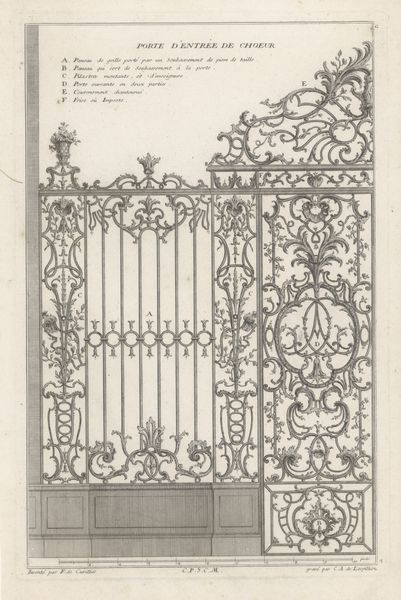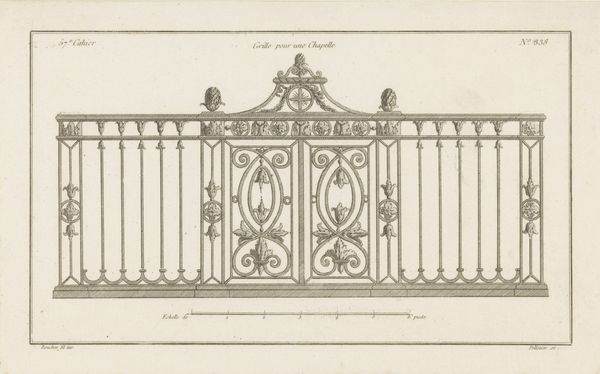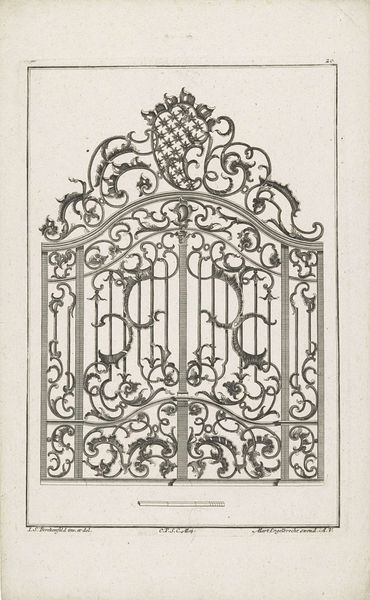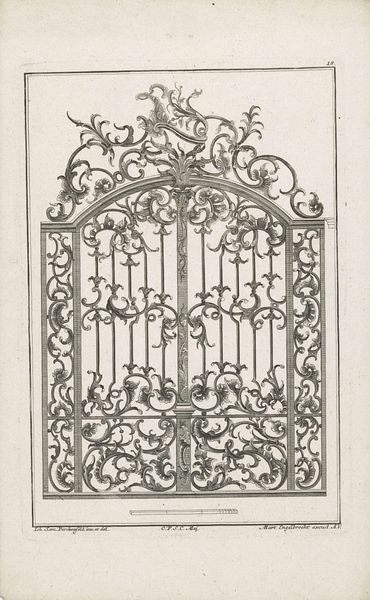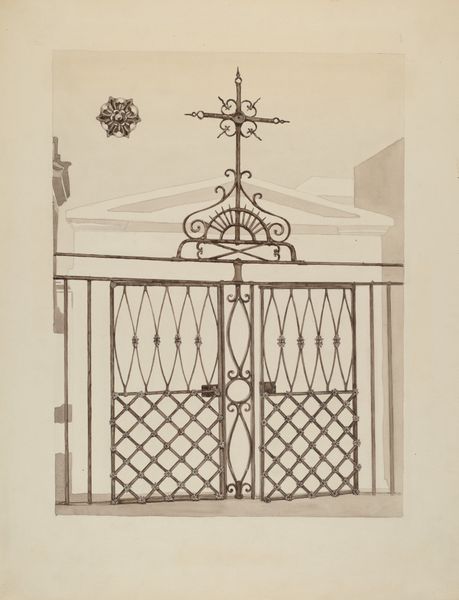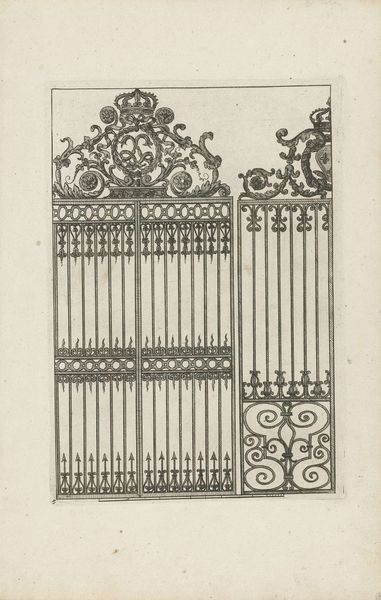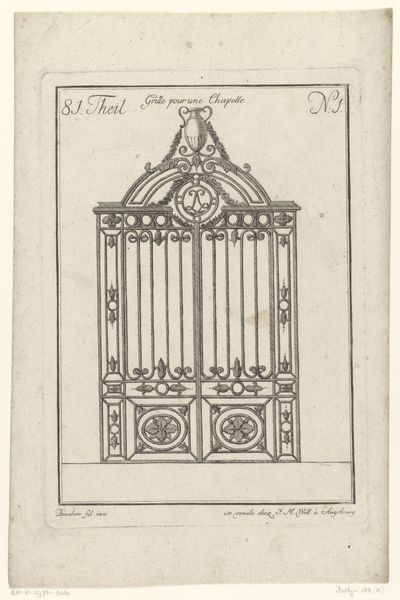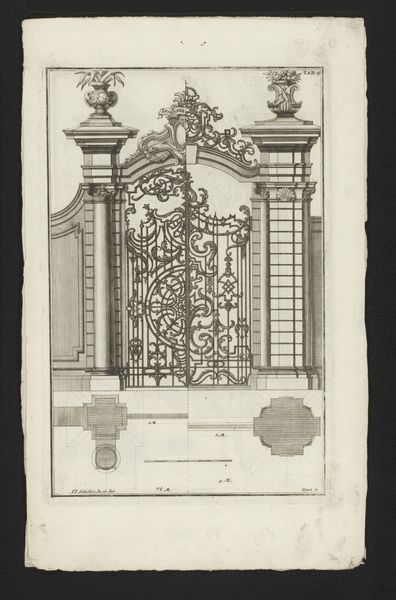
drawing, ink, architecture
#
drawing
#
baroque
#
form
#
ink
#
geometric
#
line
#
architecture
Dimensions: height 370 mm, width 244 mm
Copyright: Rijks Museum: Open Domain
This is a design for a choir screen, made by Carl Albert von Lespilliez in the 18th century. It’s a carefully rendered drawing, intended to guide skilled ironworkers in the creation of an ornate metal gate. The linear quality of the print mimics the bars of iron that would ultimately comprise the screen. Note the profusion of decorative flourishes - scrolling acanthus leaves, rosettes, and urns overflowing with flowers. These would have been wrought by hand, using techniques like hammering, bending, and welding. The ironworker would need to be highly skilled to execute such a complex design. Screens like this weren’t just about security; they were powerful signifiers of status. Iron was a costly material at the time. The labor involved in transforming it into such an elaborate form would have been considerable. The resulting screen speaks to the wealth and power of the institution that commissioned it. Considering the materials and processes used in its creation allows us to appreciate the social and economic context of this beautiful, functional object.
Comments
No comments
Be the first to comment and join the conversation on the ultimate creative platform.
